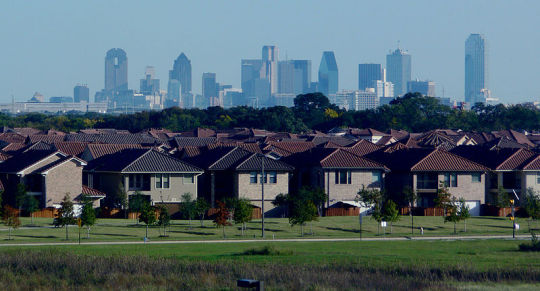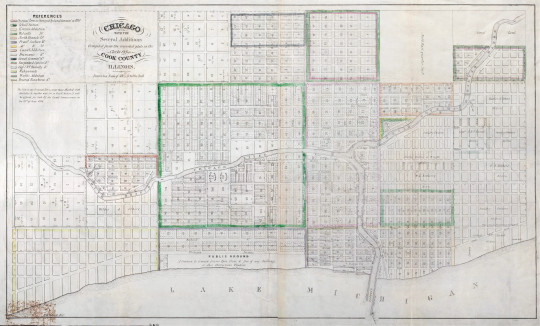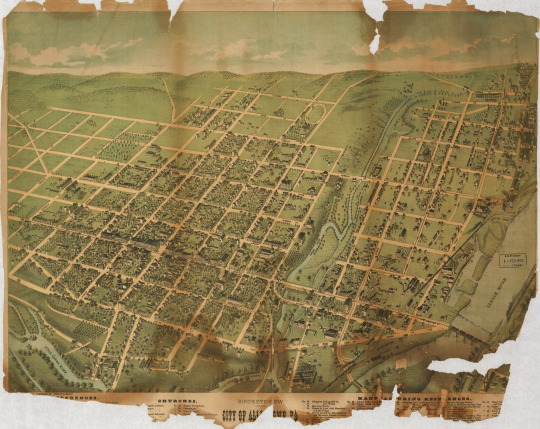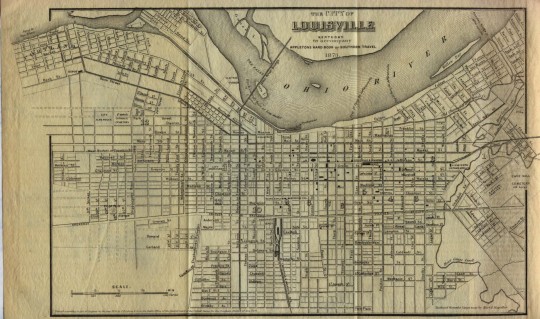Then the trajectories really, really diverged.
From McMansion Hell, Dec. 18:
A Pictorial History of Suburbia
Hello friends! Sorry for all the delays this week- exams were brutal and so was the stomach flu. Now that I am feeling better, I want to present the last Sunday post of the year - the remaining weeks will be devoted to the McMansionHell 2016 cluster-you-know-what retrospective, which should be very exciting. By the New Year, McMansion Hell will have a new logo, and a fresh dossier of topics, so stay tuned!
On to business!
Introduction
We are all familiar with exurbia - the sleeper cities in which our beloved McMansions loom over the non-existent sidewalks. However, this way of living is very recent in the grand scheme of history, even in America whose history is very short.

Dallas, TX and Suburbs by Andreas Praefcke (CC-BY-SA 3.0)
The suburb is as old as the English language itself - the word dates back to Chaucer - but the exurb, and other contemporary ways of ordering our lives is very recent, its origins begin around 1945. By 1970, the exurb had reached its final from: the SLUG (Spread-out, Low-density, Unguided Growth.)
But to know the present, we must first, of course, understand the past.
A Visual History of Neighborhood Shapes (1750-1940)
Before there were suburban areas, there were, of course, urban areas. Until around the 1850s, most people in America either lived in the urban cores of cities or in rural towns. The rural towns remained pretty much unchanged until around 1940 when many of them were absorbed into the sprawling cities.
The Early Urban Core (1750-1850)
From around 1750-1850, the urban core was pretty simple. A city would usually form around some sort of natural resource, usually a body of water, and was usually planned in a grid formation. The houses were narrow, almost always attached or semi-detached, and had no front yard. (1)


Chicago in 1836. (Open in new tab for full res)
The Urban Expansion (c.1830-1900)
In the 1850s, the cities began to expand, thanks to help of inventions like the horse-drawn streetcar, ferries, and cable cars. These expansions adopted the attached house format of the inner city, but detached housing also existed, especially in the Midwest. (2)


Allentown, PA in 1855
The Railroad Suburbs (1850-1930)
In the 1860s, the first true suburbs were born, thanks to the steam railroad. These neighborhoods were a bit more sprawled out: detached houses became the norm, along with small front yards and detached garages. Houses tended to congregate around rail stops, with the fanciest houses being the closest to the railroad.


Louisville, KY in 1873. Note railway suburbs in the top left corner.
The Streetcar Suburbs (1890-1930)......MUCH MORE